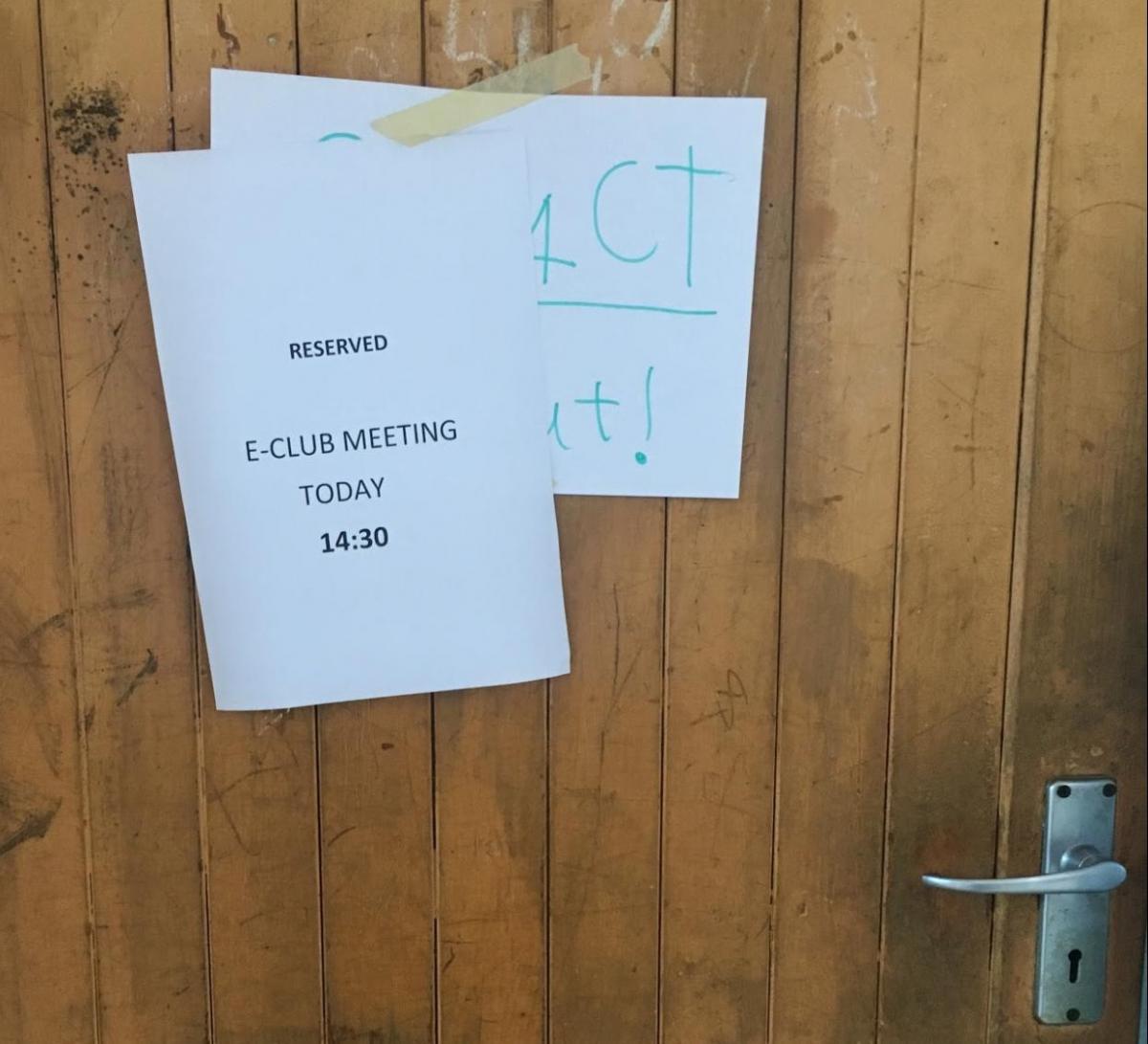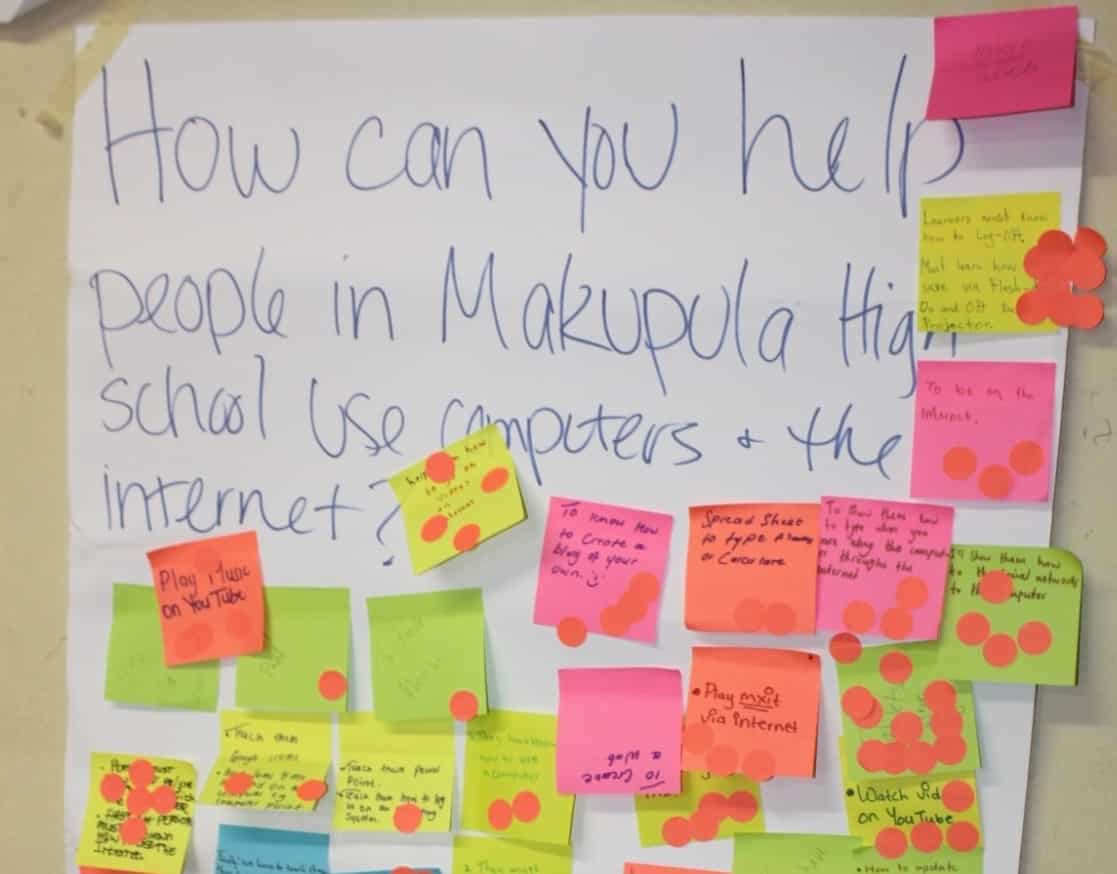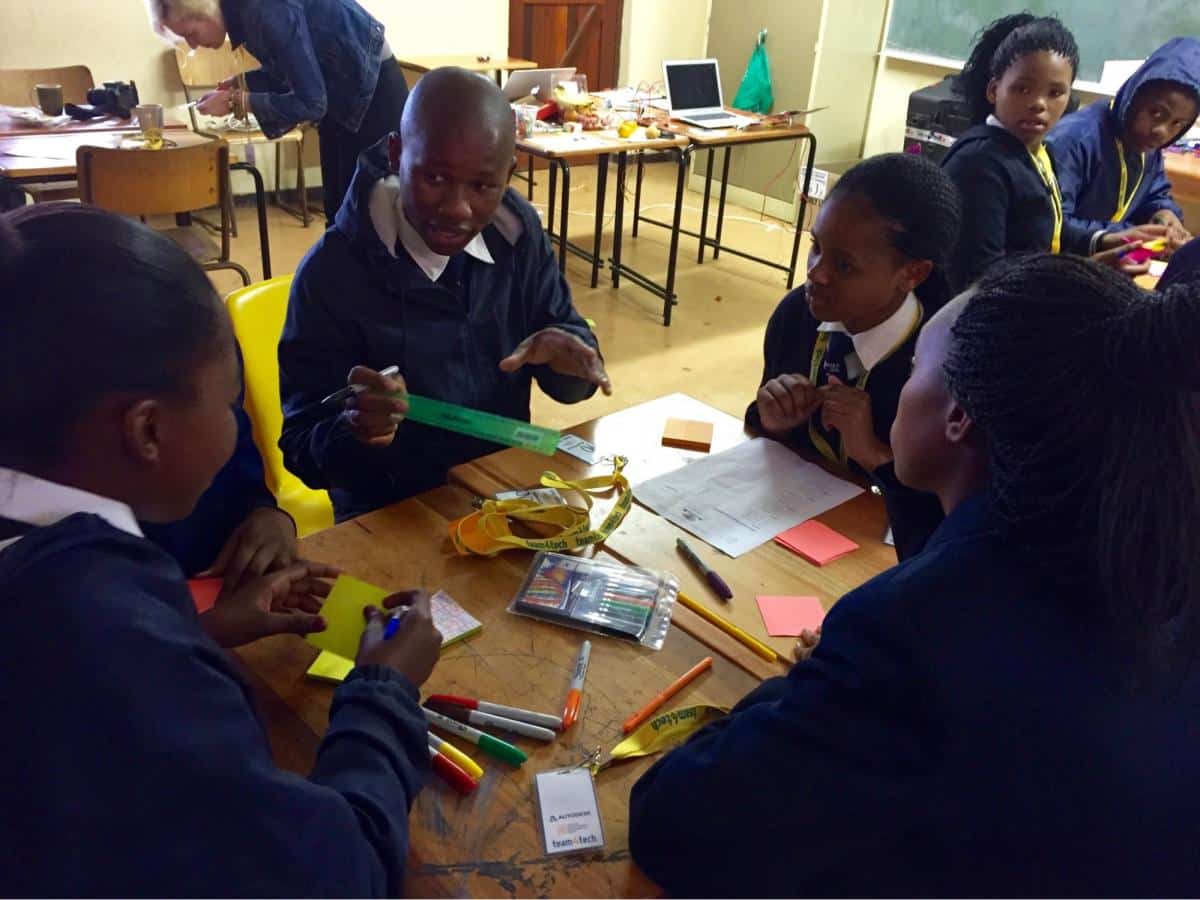
Makupula Secondary School is an incredibly exciting and vibrant no-fee public school located in Kayamandi—an impoverished community in Stellenbosch, South Africa. I’ve been working here for the past seven months and I still have a difficult time describing it to people who haven’t had the opportunity to visit. And every time I do try, I feel like my description falls short of encapsulating everything that it is.
Chimamanda Ngozi Adichie gives an incredible Ted Talk about the dangers of a single story— that “if you show a people as one thing, as only one thing, over and over again, that is what they become”.
 I think communities like Kayamandi, “townships”, often fall victim to this “single story” trap, so when people think of townships, mainly negative perceptions come to mind. There are so many inspiring stories taking place in this community, and in sharing these stories, we can reveal a more authentic identity that is Makupula. One of these stories has to do with technology.
I think communities like Kayamandi, “townships”, often fall victim to this “single story” trap, so when people think of townships, mainly negative perceptions come to mind. There are so many inspiring stories taking place in this community, and in sharing these stories, we can reveal a more authentic identity that is Makupula. One of these stories has to do with technology.
Technology has a very strong presence at Makupula, and the partnership between Eduvate & Greater Stellenbosch Development Trust, Autodesk and Team4Tech is largely to thank for that. In addition to the 36 laptops granted through Team4Tech projects over the last two years, there is also a desktop lab with nearly 40 computers, three wifi networks, printers and projectors installed in classrooms. And we’re a Google School—so, all the learners and teachers have their own Makupula Gmail and we’re working on sharing content collaboratively through Google Drive.

But having the technology is only half the battle. Teaching people HOW to use it, which implies that it first must be working properly, and helping them reach the point where they WANT to use it, is where the idea for the Makupula E-Club comes in.
Additionally, there are currently two IT interns from the Western Cape Government at Makupula who basically hold all of the ICT knowledge for Makupula, and with them leaving at the end of this year, we needed a way to make sure their ICT knowledge didn’t leave with them.
The vision for the Makupula E-Club started a few months ago when Team4Tech researched the idea and sent links to U.S. programs like Mouse Squad or a student run genius bar at Burlington High School in Vermont. At the time, there was a somewhat present Audio Visual Club at Makupula, but we were looking for inspiration on how to transform this club into something more— something that would involve the learners and give them more ownership in the role and story of technology at Makupula.
During the second Team4Tech project this past April, Autodesk volunteers then incorporated a human-centered design approach with the staff and teachers of Makupula, organizing a few sessions to gauge their ICT literacy and inspire them with some new design software and STEM project-based learning. It was a spark – the students were quickly motivated to get “hands on” with the technology when the volunteers modeled diving in, then trusted the students to interact and play with the tools or brainstorm their own ideas for future workshops.
We, meaning the adults who have taken responsibility to implement educational technology, believe in and understand its power to transform learning at Makupula Secondary School. But we need the learners to feel this way, as well.
A student run “genius bar” or ICT help desk seemed like the perfect solution.
 We had our first meeting a few weeks ago, which in addition to the seven interested learners, included all the people who were involved with ICT at Makupula. I wanted this first meeting really just to be a brainstorming session and to get everyone sitting in one room, so we could build our vision for not only the club, but for technology at Makupula, together.
We had our first meeting a few weeks ago, which in addition to the seven interested learners, included all the people who were involved with ICT at Makupula. I wanted this first meeting really just to be a brainstorming session and to get everyone sitting in one room, so we could build our vision for not only the club, but for technology at Makupula, together.
It makes the solution more resilient and impactful when working towards a shared vision that everyone is a part of creating, because the path of getting there is composed of different perspectives and ideas.
We met in the computer lab, and sat in a circle—learners, IT interns, and staff— around a computer. The first thing we did was decide on a club name. All the learners offered their ideas for a club name, and then we voted. We were to be the Makupula E-Club, and we would meet every Tuesday after-school in the computer lab.
We then moved on to the next important part of the agenda— brainstorming all the relevant and important ICT skills needed at Makupula to make sure the technology not only functioned properly, but helped us to transform learning at Makupula. We designated one of the learners to create an E-Club folder on Google Drive, and to record all our ideas in a new Google Doc, and then began generating ideas. A lot of these skills came from picking the brains of the IT interns, to make sure the learners were able to perform the same day-to-day tasks once they left. In addition to the skills that were necessary for the learners to understand, we had them brainstorm things that were interesting to them and topics they wanted to learn.

By the end of the meeting, we had collaboratively compiled a list of ICT skills relevant to Makupula that would make up the E-Club curriculum. Since then, I have shared an excel spreadsheet in our E-Club folder with a checklist of all the skills we need to learn together. The content is organized into big topics: Hardware, Software, Google Applications, and Internet Policy, Security, and Networking, that each have varying degrees of required skills ranging from basic to proficient. The idea is that every Tuesday, the learners will receive training on how to perform one of the skills, and they will be able to check off that skill in the spreadsheet. For each skill they compete, they will receive a certificate.
In addition the the “big topics”, the learners are encouraged to choose a “concentration”, which is a skill or passion they want to pursue. They can choose back-end development which consists of learning how to code using Code Academy, touch-typing, or blogging which consists of reading technology articles and writing reviews in Medium about why they are interesting or how they could be implemented at Makupula.
We have the vision for what we want the E-Club to look like in the future, and we are now working on getting there. And while we want the learners to develop both skill and interest in technology to become the IT experts of Makupula, we also want to help motivate the learners to think critically and discover how to find solutions to problems on their own.

Experts in human centered design stress the need to adopt a mindset of creative confidence—“the belief that you can and will come up with creative solutions to big problems and the confidence that all it takes is rolling up your sleeves and digging in” (IDEO). We want our learners to adopt this mindset when they are helping their peers and teachers to troublshoot ICT problems or seize opportunities to learn with technology at Makupula.
More importantly, we want them to take this mindset with them into the real world, so they feel confident in their abilities to tackle any tough challenge and make an impact in their world.
Our new E-Club is just one of the exciting educational technology integration prototypes continuing at Makupula High School as part of our partnership with Team4Tech and many others. We are excited for the opportunity to amplify the voice of students in this movement in South Africa, to empower them to use technology to make learning come to life.

Sally and the E-Club youth hope to continue to blog their progress – follow them at http://www.sallyinza.com/news/.
Check out more on Team4Tech’s use of design thinking to integrate technology into education and intenational development in an Autodesk Line // Shape // Space or Ideas article.



